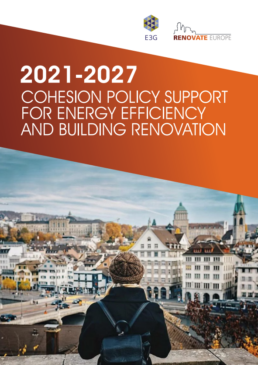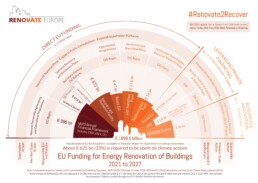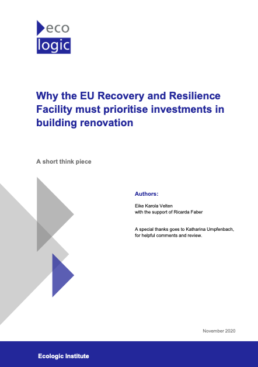2021-2027 Cohesion Policy Support for Energy Efficiency and Building Renovation
This study looks into how EU member states plan to use cohesion policy funding to support renovation and draws attention to key actions to maximise impact.
An estimated €20bn are programmed for energy renovation and energy efficiency. With co-financing from member states, this could could reach €29bn.
This is an important contribution to financing renovation. However, these funds alone cannot cover the investment needed to meet the 55% emissions reduction target for 2030.
In the run up to 2030, the new cohesion funds will be used alongside the Recovery and Resilience Facility (RRF) to support the delivery of renovation investments across the EU. RRF and cohesion funding combined will provide over €66bn for energy renovation across the EU until 2029.
To achieve maximum impact of this unprecedented quantity of EU money, effort must be made to use the funds as efficiently as possible. To do so members states should focus on:
- Attract and leverage private finance while targeting grants where they are most needed
- Ensure careful coordination with other (EU) public funds
- Monitor programme implementation and address delivery bottlenecks
Eyes to the horizon during a crisis
EU member states have allocated more than €570bn since September 2021 to schemes designed to cushion the financial impact of the energy crisis and keep consumers and businesses out of bankruptcy. However, long-term goals that will shield Europe from a repeat of this crisis in the future, such as buildings renovation, are stuck on the investment back-burner. This must change.
Spend wisely: How to use Cohesion Funding for Energy Renovation
The European Regional Development Fund (ERDF), Cohesion Funds (CF) and the European Social Fund Plus (ESF+) can make a big difference for buildings renovation. But the Operational Programmes must be designed and implemented in a way that creates and sustains a renovation market for the longer term, beyond the “cliff-edge” end of the programming period.
We strongly urge Member States to consider the Key Recommendations (attached) on how to channel MFF funding effectively towards energy renovation in the Operational Programmes, namely by:
- Ensuring coherence with EU long-term climate objectives
- Attracting and leveraging private financing
- Complementing and/or boosting national regulatory and funding initiatives already underway
- Maximising Programme Implementation
The buildings sector is a sector of enormous economic potential, creating local jobs and reducing citizens energy bills – all the while reducing greenhouse gas emissions and slashing Europe’s dependence on foreign imports.
Why the EU Recovery and Resilience Facility must prioritise investments in building renovation
Modernising the EU’s building stock is essential to meet the twin goals of climate action and green recovery. The building sector is responsible for 27 % of total greenhouse gas (GHG) emissions and for 36 % of energy-related GHG emissions when considering direct and indirect GHG emissions. According to the European Commission, building renovation rates must double to contribute to the envisioned 55 % emission reduction by 2030 – and this in turn is vital to go climate neutral by 2050.
Meanwhile, energy renovations are a key driver of a fair and sustainable recovery: the International Energy Agency (IEA 2020) and Buildings Performance Institute Europe (BPIE 2020) both predict about 18,000 jobs per billion euros invested. Improving the quality of our building stock is equally important to address indoor air quality and energy poverty.
Ecoligic’s think piece makes the case for earmarking a minimum share of the Recovery and Resilience Facility (RRF) to finance in-depth building renovations. The method recommended is to allocate RRF funds according to the building sector’s share of total GHG emissions, in line with the EU’s green recovery commitments and the requirement to spend 37 % of the Recovery and Resilience Facility grants and loans on climate-related investments.



